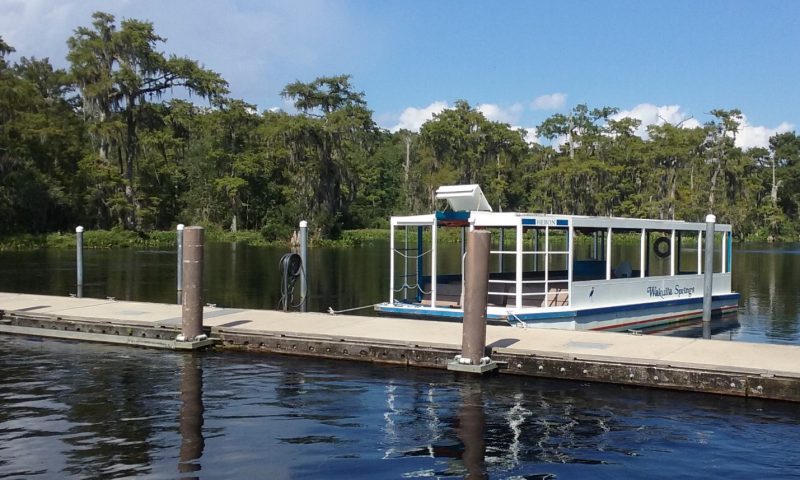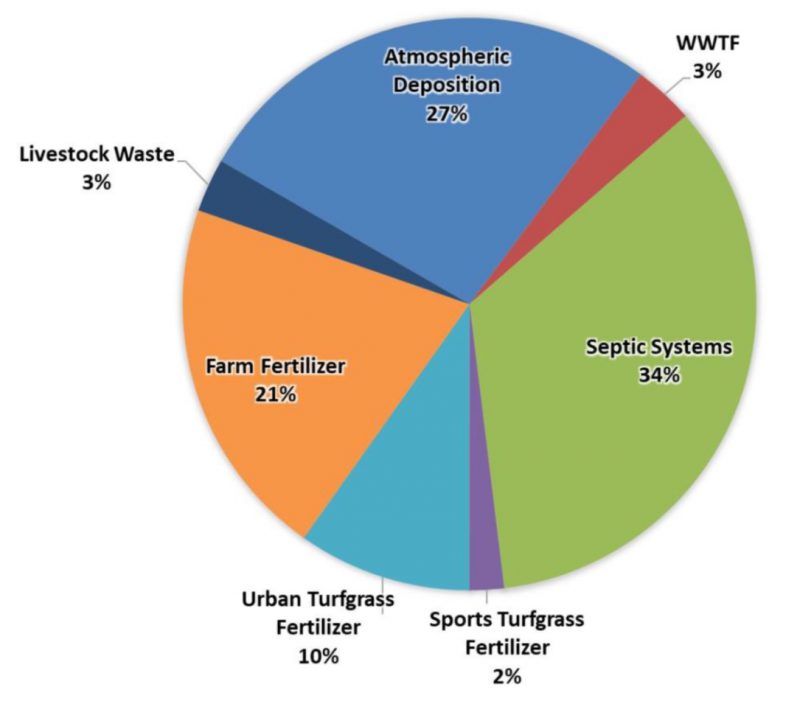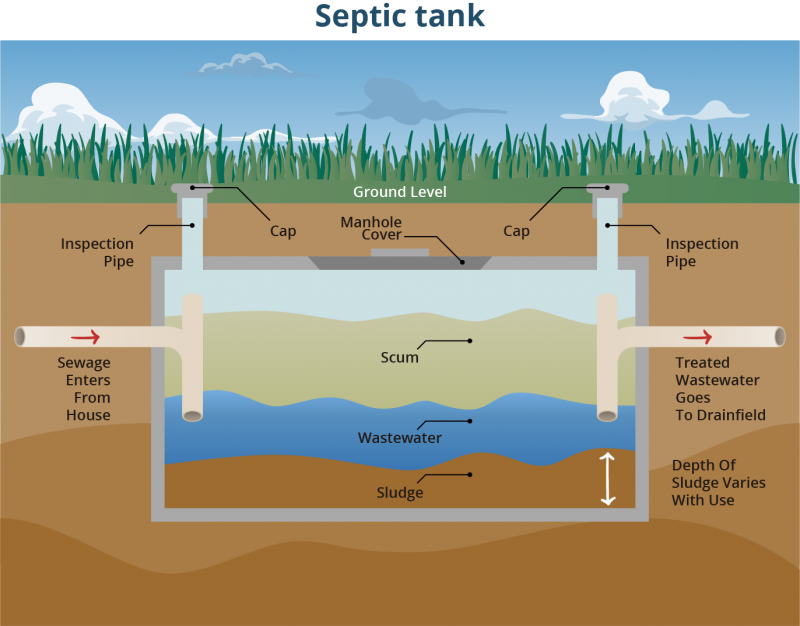
Septic systems are identified as the major source of nitrates in Wakulla Springs. Photo credit A. Albertin, UF/IFAS
As the state of Florida moves forward with watershed and springs basin restoration plans, also known as Basin Management Action Plans (BMAPs), reducing nitrogen loads to degraded water bodies is a priority in many areas. Excess nitrogen in springs, rivers and coastal areas can come from multiple sources. Depending on where you live, these sources can include septic systems, agricultural or residential fertilizer, livestock waste or wastewater treatment plants, among others.
–
How prevalent are septic systems in Florida?
About 30% of Floridians (7 million people) rely on septic systems to treat and dispose of their household wastewater, which includes all water from bathrooms, kitchen sinks, washing machines, and dish washers. The Florida Department of Health (FDOH) estimates that there are about 2.6 million septic systems in the state.
A septic system is made up of a septic tank (watertight container buried in the ground) and a drainfield or leach field. The septic tank’s job is to separate out solids (which settle on the bottom as sludge), from oils and grease, which float to the top and form a scum layer. Bacteria work on breaking down the solids (the organic matter) in the tank. The liquid wastewater (or effluent) then flows out through a pipe into the drain field, which consists of a series of trenches or a single bed with perforated PVC pipes. Wastewater effluent seeps into the surrounding soil along the length of the pipes.
Most of the wastewater treatment takes place in the drainfield soil, where contaminants like pathogens and some nutrients are removed by filtering interaction with soil surfaces. Many harmful organisms die off in the soil environment. Florida law requires the bottom of the drainfield be at least 24 inches above the seasonally high water table, allowing wastewater to filter through unsaturated soils (soils that drain water), before reaching the water table. Proper filtration is not possible when drainfield soils are flooded or completely saturated.
–
How can septic systems be a source of nutrient contamination?
Septic systems were designed from a public health perspective to treat pathogens (like harmful bacteria), and they do a very good job of this under most circumstances. They were not designed to keep nutrients, like nitrogen, out of the environment. Even when a system is functioning as designed, and is the correct distance from the high water table, most of the nitrogen that comes into the tank (from human waste and kitchen scraps from a garbage disposal), still flows into the drainfield soil. A conventional septic tank only removes 10-50% of the nitrogen that enters it.
–
Identifying sources of nitrogen to impaired waterbodies
The Florida department of Environmental Protection (FDEP) uses a tool called the Nitrogen Source Inventory Loading Tool (NSILT), to estimate sources of nitrogen in areas with a BMAP. This is based primarily on land use in the basin. In some areas, FDEP identified agricultural activities as the largest contributing source of nitrogen to an impaired water body. In the Jackson Blue Spring/Merritt’s Mill Pond BMAP, for example, FDEP estimates that 79% of the nitrogen load to the spring is from fertilizer used for farming. In other areas, septic systems are the largest source of nitrogen. In the Wakulla Springs BMAP, they contribute an estimated 34% of the nitrogen load. In the Crystal River/Kings Bay BMAP, they contribute 42% of the nitrogen load.

Nitrogen sources in the Wakulla Spring Basin and percent contribution to total nitrogen load to the spring and upper Wakulla River. Source: Upper Wakulla River and Wakulla Springs Basin Management Action Plan, FDEP 2018.
–
Septic to sewer hookups and septic system upgrades
If septic systems contribute 20% or more of nitrogen to a specific area of a spring’s BMAP, a Priority Focus Area (PFA) is designated and a septic system remediation plan is put into place. PFAs are areas within a spring basin that are the most prone to contributing nitrogen to a spring. This is based on factors like the geology of the area and the proximity to the spring. Remediation plans include abandoning septic systems and connecting homes to municipal sewer systems, where possible, and replacing conventional septic systems with advanced nitrogen-removal systems that remove more nitrogen than conventional systems. New construction on lots that are 1 acre or less also require advanced nitrogen removal systems, where sewer hookups aren’t possible.
–
More information on septic systems and BMAPS
Your county health department is the best resource regarding septic systems and any ordinances that may apply to you, depending on where you live. The DOH website has a wealth of information on septic systems, permit requirements, advanced nitrogen removal systems and much more.
For specific information on BMAPS, The FDEP’ website is the most comprehensive resource. All BMAPs (full reports with specific action items listed) can be found there, along with maps, information about upcoming meetings and webinars and other pertinent information.
The Northwest Florida Water Management District is also an excellent resource here in the Panhandle. Their staff can let you know whether or not you live or farm in an area with a BMAP and how that may affect you in the future.
- Testing Your Irrigation Water: A Key Step for Managing Crops and Equipment - November 21, 2025
- What to Do if Sinkholes Open on Your Property - November 15, 2024
- Crop Farmers Implementing BMPs in the Chipola River Basin - May 24, 2024

